
A Question of Justice: Nooshin Javadi
How can art help us face injustice with honesty, humor, and hope?
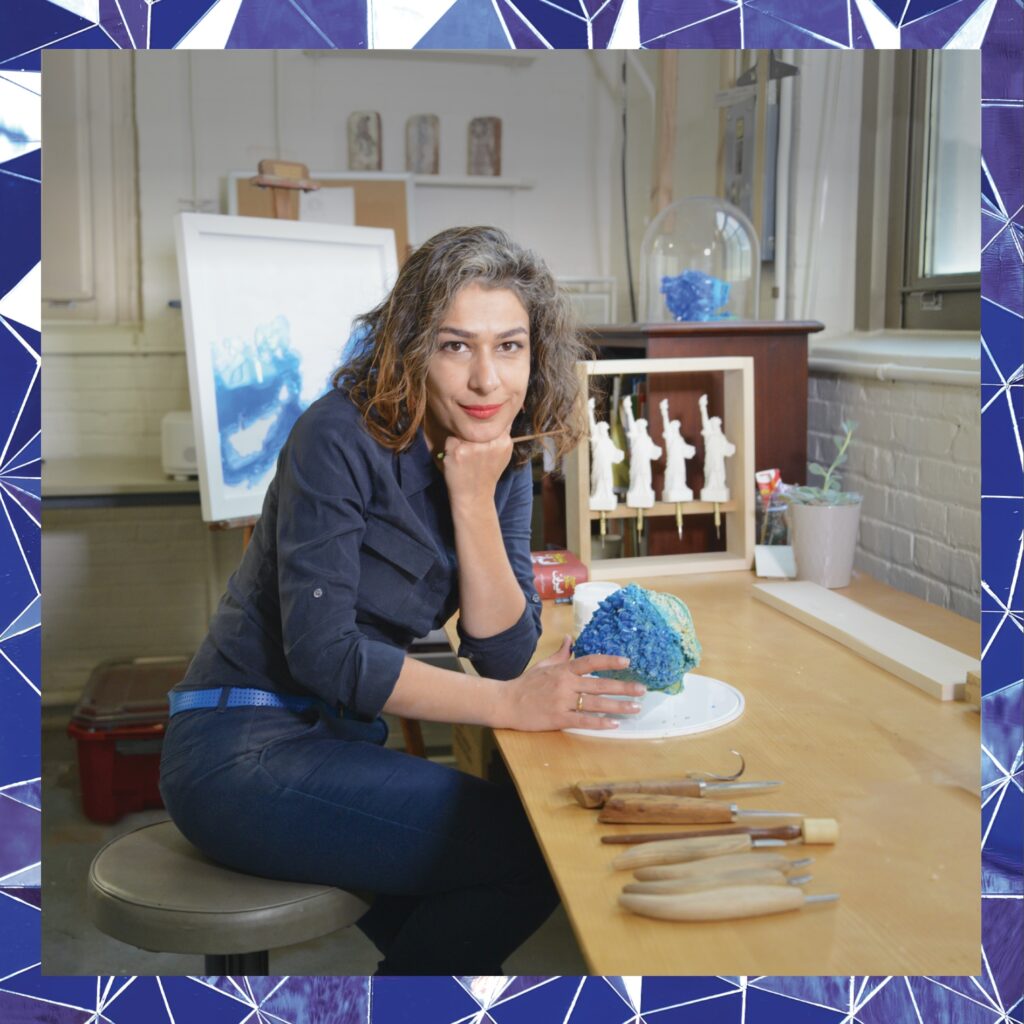
“I recently realized that the more I try to run away from oil, the more it somehow seems to pursue me, so I decided I need to work on it,” explains Nooshin Hakim Javadi shortly after we sit down to talk over tea in her Riley Hall office.
Nooshin is an Iranian artist who studied mathematics before turning to studio art and working in sculpture, installations, and performances. Her varied work is difficult if not impossible to characterize succinctly, condensing myriad questions into forms that are arresting, engaging, and often humorous. Imagine if a carnival funhouse were furnished with tipping floors and distorting mirrors that present and reflect relics of the dizzying politics of oil.
Relics and remembering
The word “relic” is an important one for Nooshin’s work. She explains that it comes from the Latin for “remains” and a form of the Latin verb for “to leave behind or abandon.” When Nooshin left Iran in 2009, she carried many things with her, including relics from student protests against the regime of President Mahmoud Ahmadinejad. She participated in those protests as a BFA student in studio art at Tehran University.
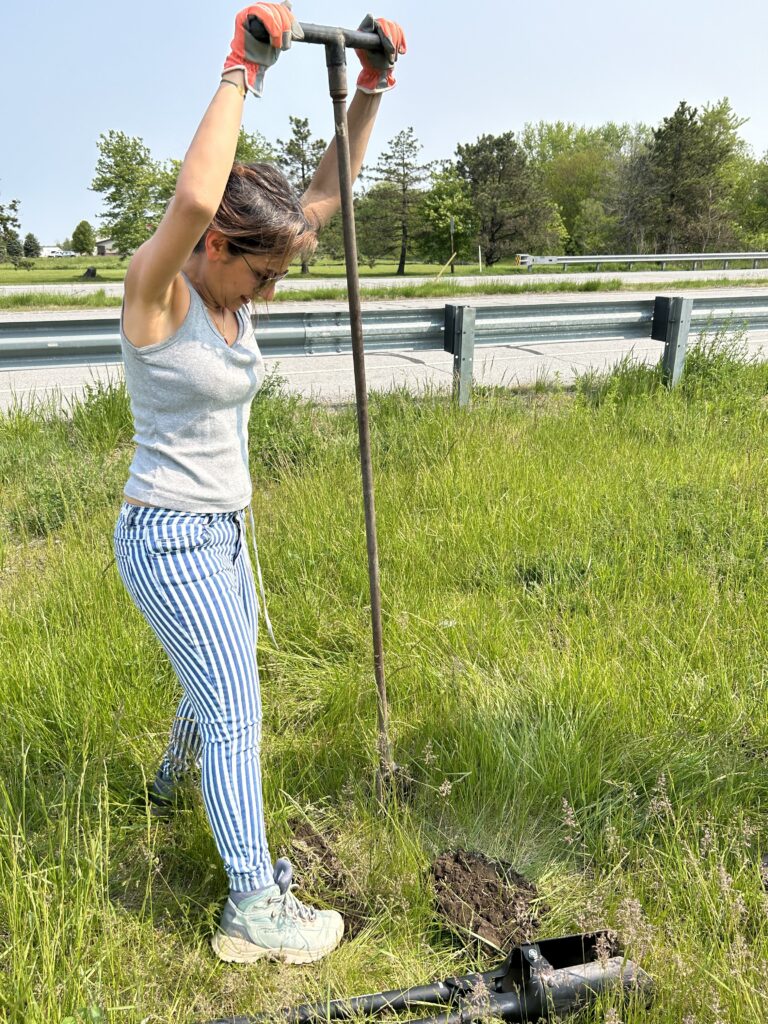
One weekend she traveled to visit her parents two hours outside Tehran. Before she could return, police closed city entrances to block protestors, but protests continued. Soon police resorted to teargas to disperse protesters who responded by burning whatever they could find because smoke effectively mitigates the effects of teargas. Nooshin returned to Tehran a day later to find that her entire thesis project had been among the things burned.
“I’ve made so many sculptures during the last four years,” she thought as she witnessed the destruction, “but none of them means as much to me as this burn.”
It was a very public mark in front of Tehran University where Iran’s religious leadership gathered every Friday for prayer. Within hours, the mayor had ordered police to remove all signs of the protest from the street; he later ordered the pavement in the area replaced. Not long after that Nooshin made the difficult decision to leave her country.
Facing the furies of oil
Among many other things, Nooshin carried with her the image of burnt pavement and a sense of the outsized role oil plays in Iranian life and politics. “All the things I’ve been involved with in Iran are really influenced by oil. It’s behind everything,” she says. Shortly after she arrived in the United States for graduate work in studio art, she found herself working on oil-related projects in Mississippi and Minnesota and wondered if she would ever escape the furies of oil.

“Art is an invitation to something. You invite people and then you see how they respond. It doesn’t belong completely to the artist.”
In 2021 Nooshin came to Notre Dame to teach studio art in the Department of Art, Art History, and Design. Once in South Bend, she heard about oil refineries in East Chicago and Whiting, Indiana, and wondered about their effects on the region. She then learned that Indiana was among the states with the worst air and water quality in the country, something that researchers attribute to two large oil refineries and 53 superfund sites in the state.
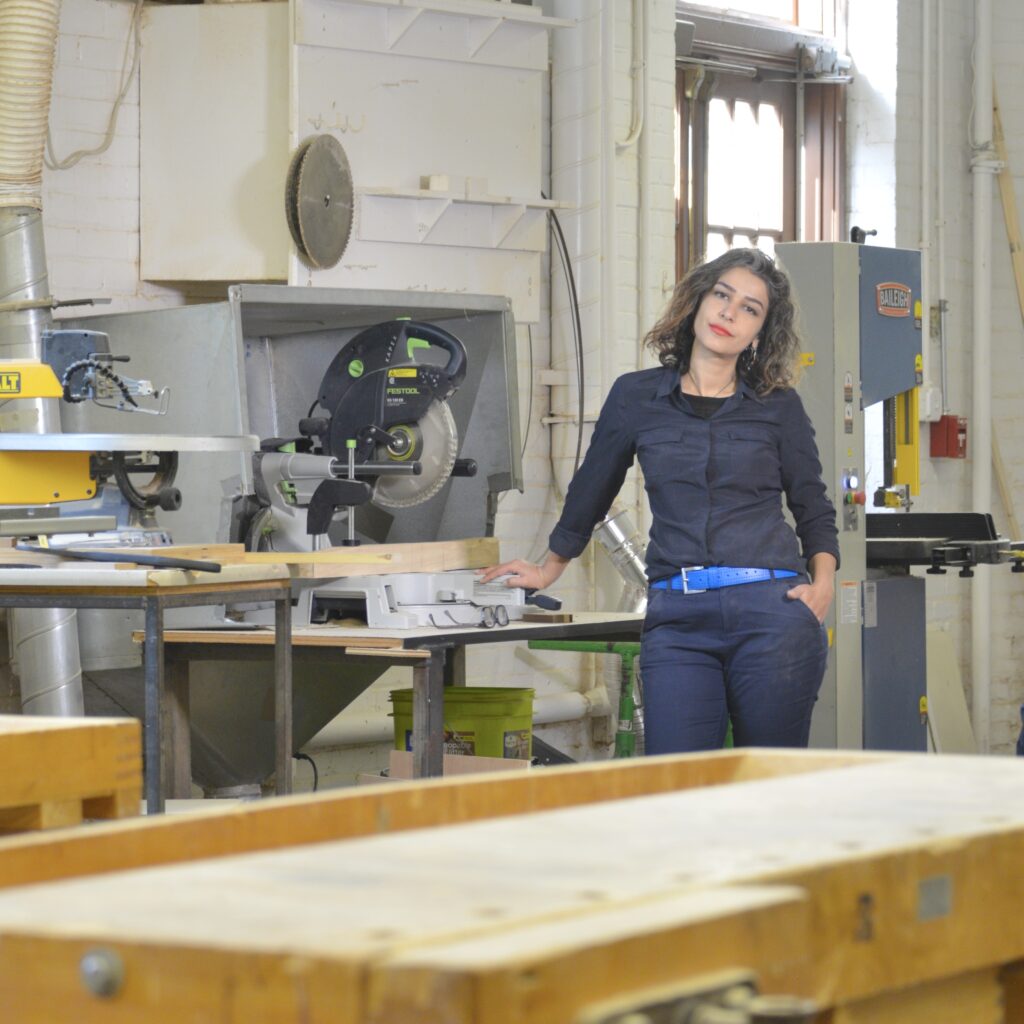
She also learned that the effects of oil contamination hit closer to her new home so started learning from a local soil scientist how to conduct independent soil research. Over the next year and a half she conducted research and surveys of the Great Lakes region with a team of engineers, architects, and an oil industry whistleblower.
A musical response
If Nooshin were a reporter, a documentary filmmaker, or a soil scientist she might have produced an article or film to inform people in the region of the dangerous conditions they inhabit. But she’s an artist. In response to her regional soil research, she created what she calls a “sound sculpture about soil contamination” with collaborators Rodrigo Cadiz and Pedram Balsari; her colleague Yazen Khasawneh in Civil Engineering; Michel Rozas who worked on electronic design and implementation; vocalist Natalia Cádiz; and an anonymous oil industry whistleblower.
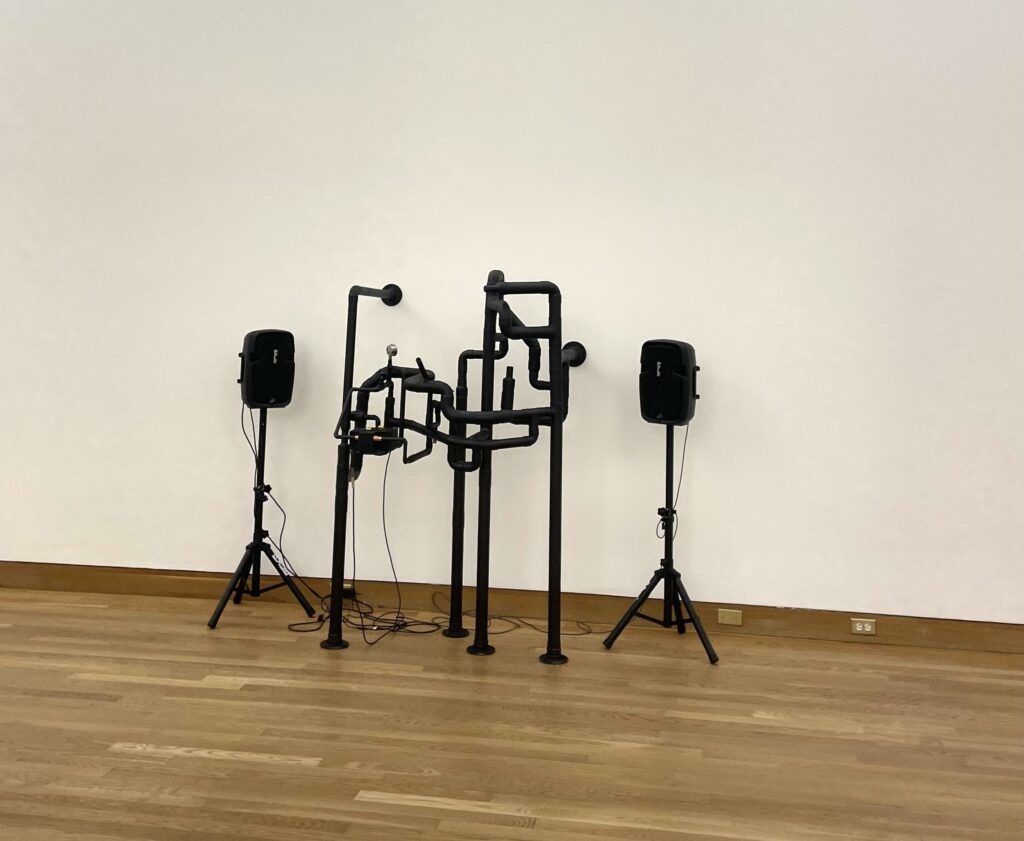
The work, now at the Weisman Museum at the University of Minnesota, is called Fossilized Past. It’s made of copper pipe painted flat black, with black bookshelf speakers on both sides of it. There’s a four-channel mixer that visitors are encouraged to play with at the center of the structure. The channels feature the data sonification of an oil spill in Gary, Indiana; a soundscape from a refinery in Santiago, Chile; a soundscape with birdsong; and a refinery soundscape from the Whiting, Indiana BP refinery. A small, rubber pipe extends from the center of the piece so visitors can blow into the structure and activate the sounds of water protection protests.
Encountering the work it’s hard to tell if we’re participating in a post-modern musical experiment, a lament for current environmental conditions, or both and much more. Nooshin’s works invite clear-eyed reflection on the harms we do each other and the world while refusing cynicism and encouraging laughter and even celebration.
“People see pieces like this as super heavy, but there’s something hopeful about it to me, because music is hopeful, and you can hear water protectors and birds. It’s not only saying, ‘look how horrible this is,’” she explains.
Background artwork: Placeholder by Nooshin Hakim Havadi

A Question of Justice: Marianne Cusato
How can architects design for dignity?
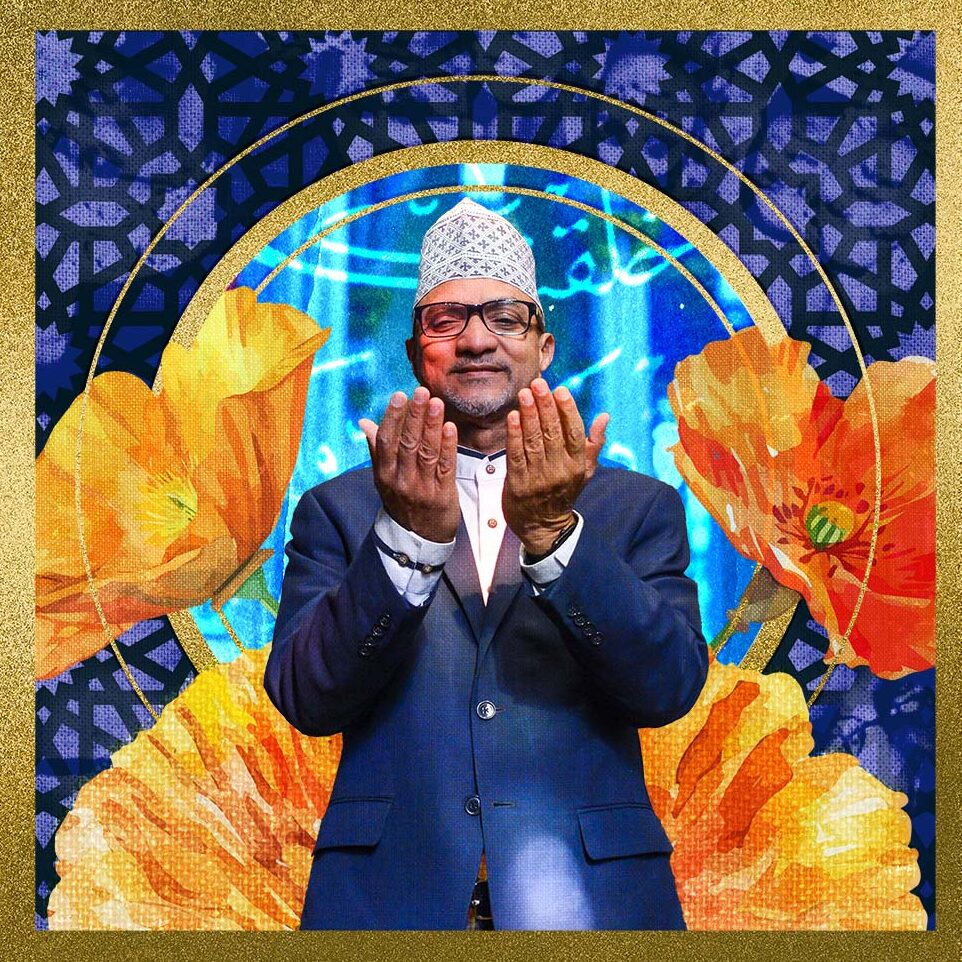
A Question of Justice: A. Rashied Omar
How can interreligious solidarity be harnessed as a force for justice?
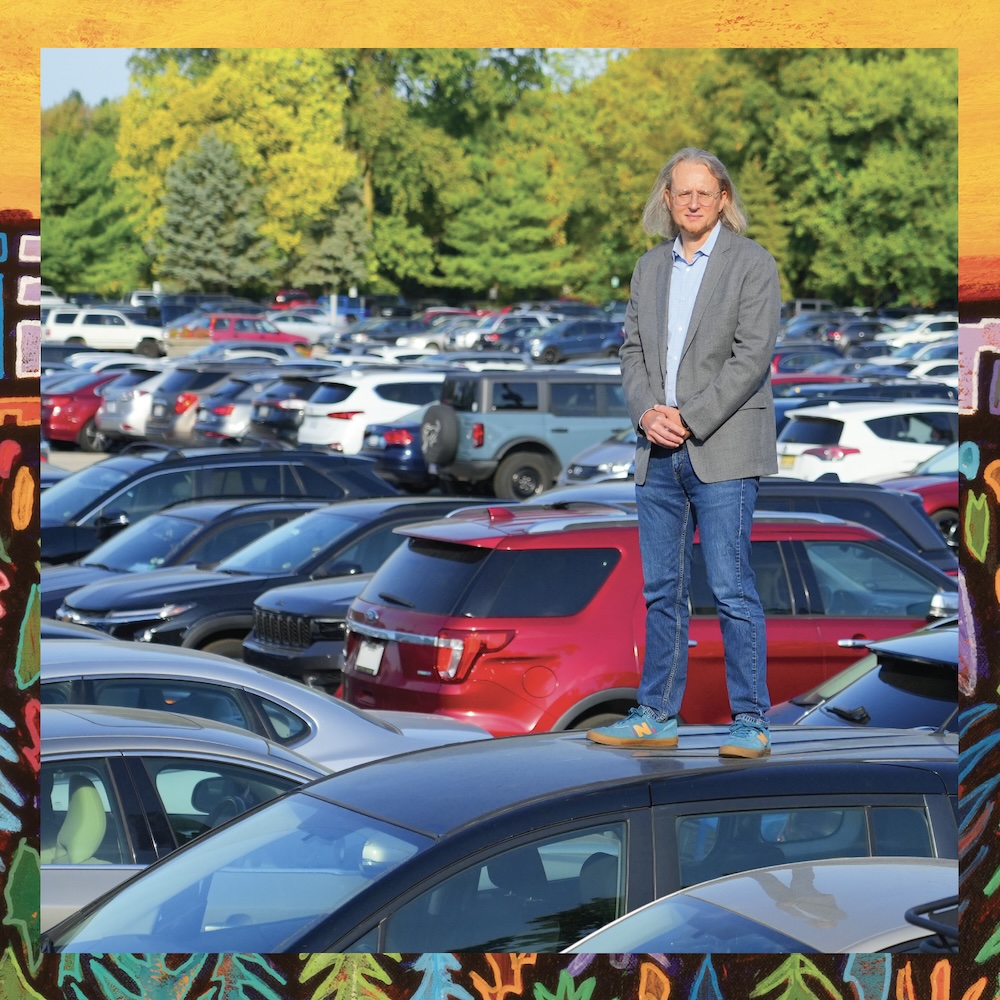
A Question of Justice: Roy Scranton
What does justice look like in the face of civilizational collapse?
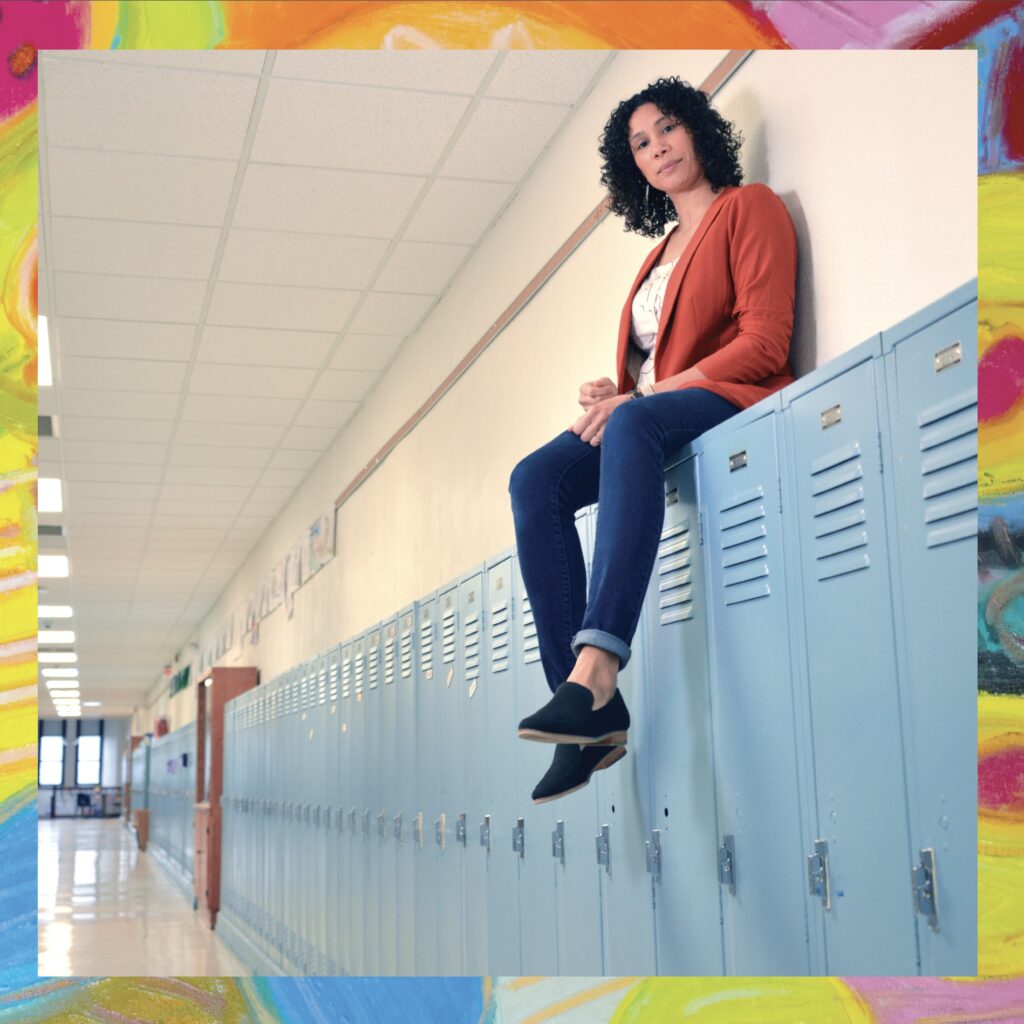
A Question of Justice: Anna Haskins
Why do racial disparities in education persist despite decades of efforts on behalf of equal opportunity and racial justice?
